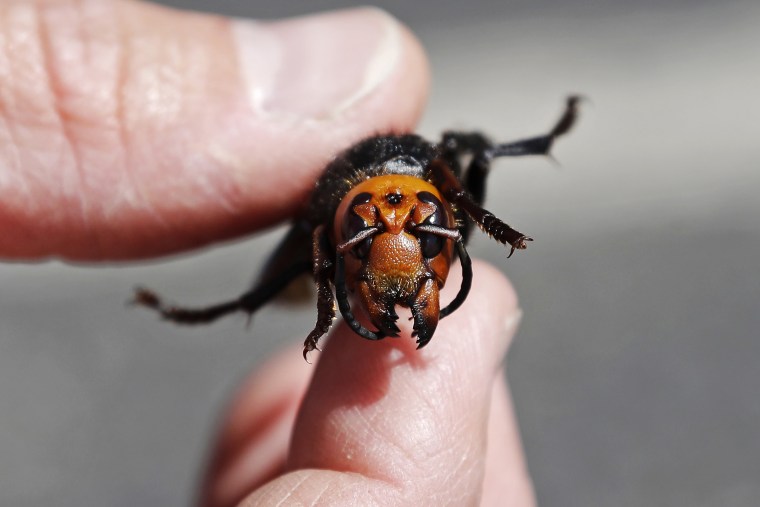Evidence of six sightings of Asian giant hornets, known as murder hornets, in Washington state have prompted an urgent search for a possible nest.
State agriculture officials are working to find and destroy a nest before the hornets enter their "slaughter phase," when they kill honeybees, which are crucial for pollinating some of the state's staple crops, such as raspberries and blueberries.
Murder hornets' attacks on honeybee hives tend to increase around this time of the year, said Sven-Erik Spichiger, a department entomologist, during a virtual news conference Friday.
Many farmers in northwestern states depend on honeybees to pollinate their crops.
The first of the recent sightings occurred nearly two weeks ago when a private landowner in the town of Blaine in Whatcom County, near the Canadian border, captured two murder hornets.
When the state Department of Agriculture responded to the sighting on Sept. 30, a scientist trapped one hornet alive, a first for the agency, spokeswoman Karla Salp said during the news conference.
Other Blaine residents reported several other sightings that same week.
The number of murder hornets found suggest that a nest has been established in the area, said Spichiger. “We hope to locate the nest in a couple of weeks and eradicate it.”
In order to successfully eradicate the nests, murder hornets need to be caught alive.
Agriculture department staff tried to glue a tracker on the one murder hornet they trapped alive, hoping to follow it to its nest, Spichiger said. But the glue didn't dry fast enough, and the tracker fell off. Scientists hope to capture another live hornet soon and try again.
Besides decimating entire honeybee hives, the Asian giant hornets can deliver agonizingly painful stings to humans. There is also evidence that the giant hornets are also attacking native wasps and hornets, Spichiger said.
The invasive insect typically found in China, Japan, Thailand, South Korea, Vietnam and other Asian countries was first documented in Washington state late last year. It's unclear how it arrived.
At least 14 hornets have been found in the state over the last year, according to the state Department of Agriculture's Asian giant hornet dashboard.
Washington and the Canadian province of British Columbia are the only places the hornets have been found in North America.
There have been reports from Asia of murder hornets stinging people so often they have died.
Hornets, wasps and bees typically found in the U.S. kill an average of 62 people a year, according to the Centers for Disease Control and Prevention.

